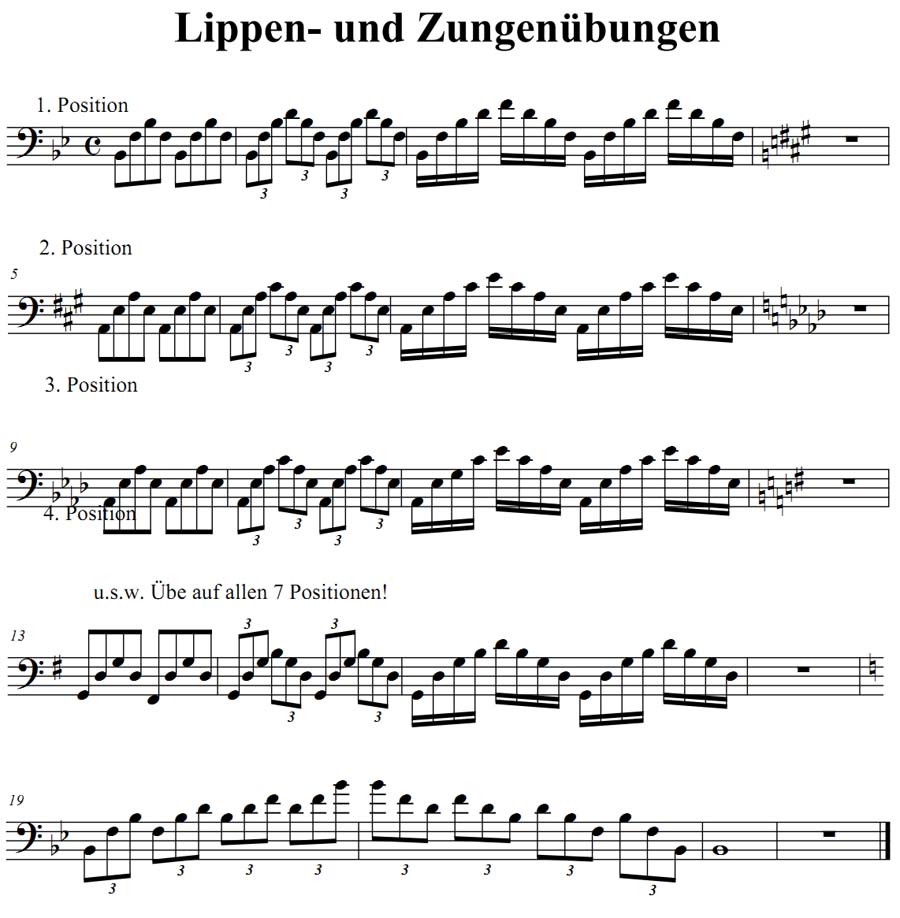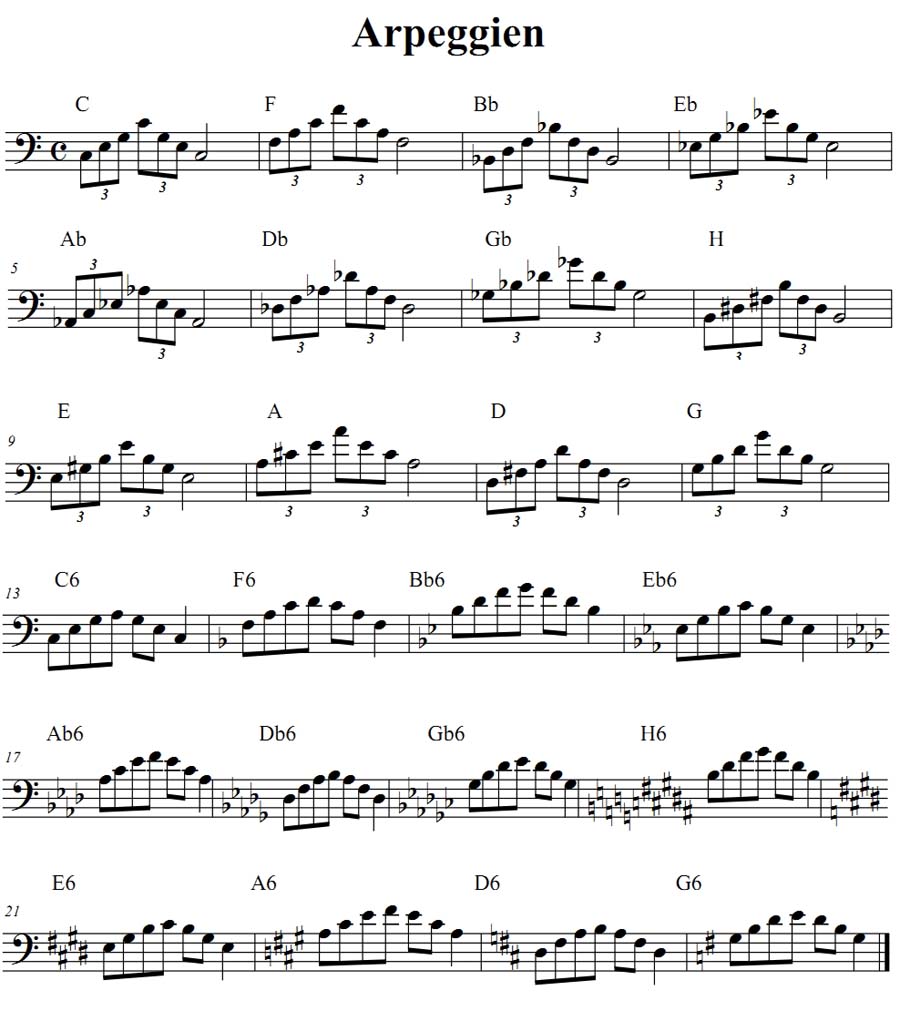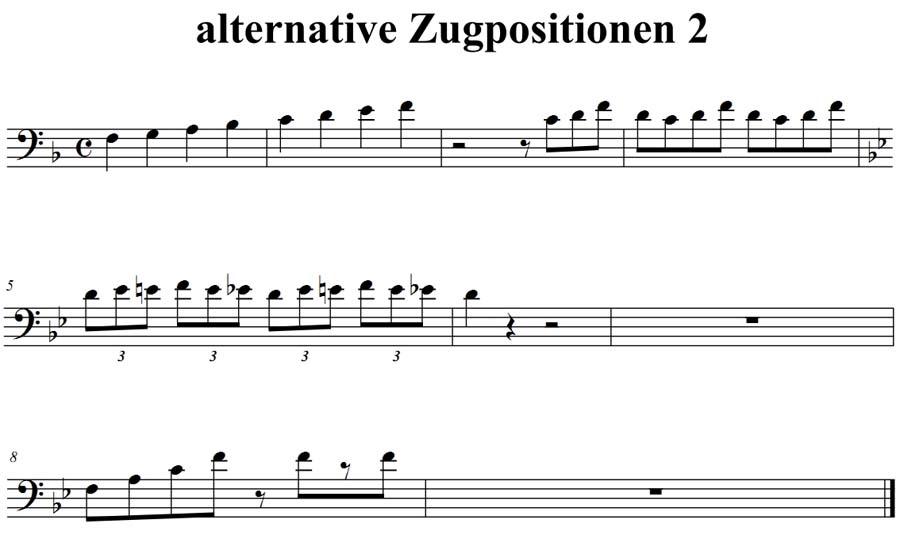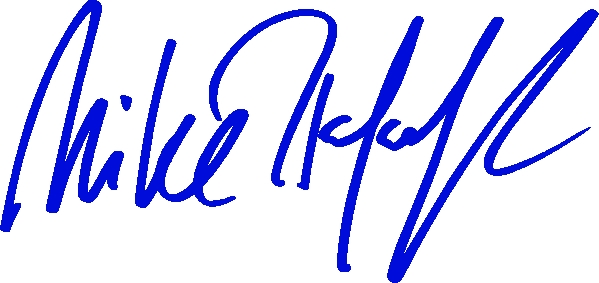Tips for trombone players
Dear fellow trombone player,
In my previous article (33), I discussed general requirements for professional trombone playing. This time, I want to talk about the optimum playing style. And for that, we need to know the best slide positions.
- The express train, or alternate slide positions
Let us begin with something important...
Tip 1:
The notes of our natural scale (Bb-F-Bb-D-F-Ab...) are not necessarily in tune!
In slide position 1 (slide completely retracted), for instance, the high F is sharp, while the Ab is seriously flat!
For a minor third interval, like D-F, for instance, I need to extend the slide 2~3mm more for the F. Careful: this applies to all positions that are derived from this natural tone, e.g. C-Eb! The Ab (= G#) is so flat that I recommend only playing it using the 3rd position. This means we need to move the G from the 2nd position elsewhere.
Using alternate slide positions makes it a lot easier to play high notes. Consider the Bb-C-D-Eb-F sequence, for instance:

Lip flexibility
I think we all agree that the trombone is a rather sluggish instrument. Considering how easy it is to play fast scales on a saxophone, a trombone must seem painfully slow. This makes it all the more important to not just practice slide movements but also to work on the flexibility of our lips. What I’m telling you here is not new. The hardest, yet most effective "workout" for the lips was developed in the 1900s"”around 1914, I think it was.
Reading suggestion: Ernst Gaetke: Tägliche Zungen- und Lippenübungen, Verlag: Zimmermann, Frankfurt
The most important thing is to start each exercise at a slow tempo and then gradually play it faster.

Articulation and phrasing on the trombone
In order to master the instrument in such a way that IT does what WE want (rather than the other way around), we need to work on the same aspects as all other musicians (except drummers): scales and arpeggios (chords whose notes are played one after the other; from the Italian "arpa"= harp). Ideally, you should practice ALL scales and arpeggios, because all melodies consist of more or less long scale and arpeggio excerpts. That is the only way to turn the trombone into your mouthpiece.
Portato and vibrato
I am still amazed by how many brass players start each note softly and then gradually let it swell (portato). While some may consider this beautiful, it is not very professional. After all, portato is an effect that should be used sparingly if one really wants to make a statement.
Tip 2: be sure to only use articulation effects where they are desirable.
Another frequent mistake is the uncontrolled use of vibrato. Trombone players can generate two kinds of vibrato, one of which is "tremolo" and isn’t really vibrato. Vibrato is a periodic variation of a note’s pitch, which is produced by rapid movements of the slide. A periodic modulation of the level, the so-called tremolo, may sound similar to vibrato, yet it works differently. This effect can be achieved by means of upward and downward movements of the jaw or lips.
Summary
Tip 3: listen to other trombone players and musicians, paying attention to the effects they use!
Granted, all of the above is no replacement for thorough trombone classes. But if you decide to become a trombone player, you will have to deal with this again. If not, I hope the above allows you to become more aware of the factors at play while playing.
All the best for your professional playing endeavors!




